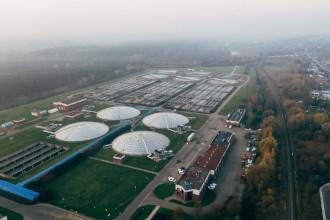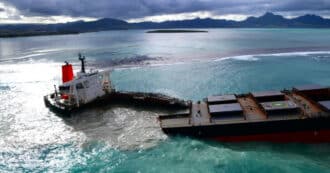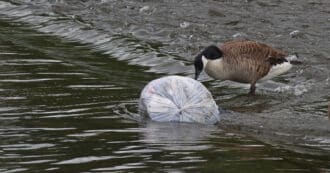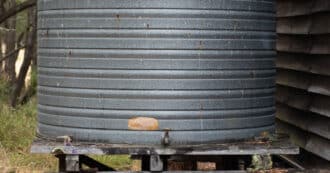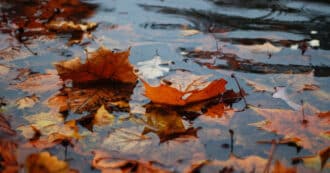By Sydney Cohen – Water is essential to life. It provides for drinking, sanitation, and irrigation needs to the world’s population. However, in many parts of the world, water is not available without a significant expenditure or travel time. Sometimes no water is available except by water trading with other countries.
Rainwater harvesting offers an alternative source of water that has been around since the days when man first walked on earth, but advances in technology have made it more accessible than ever before.
We now have methods of removing naturally occurring organic material and harmful pathogens, through membrane filtration, charcoal filters, chlorine treatment and UV units, all as part of the filtration and purification process after rainwater collection.
Continue reading to learn more about these various rainwater systems, and ways to treat rainwater for an eco-friendly solution to water scarcity!
Rainwater Harvesting
Typically rainwater harvest is achieved using surface runoff in urban areas. In some situations, surface water may be used for farming. In another system, rainfall and water are transferred to the surface and stored as a water supply.
Rainwater can contain pollutants, animal toxins, and particles that are toxic. The harvested rainwater should be filtered and treated before being used as water for consumption. Rainwater could also contain contaminated soils, animal excrement, or other substances contaminating humans. So collected rainwater should be cleaned to ensure its safe usage.
The harvesting of rainwater from homes began very early on. Rainwater stores are used for drinking water and other purposes. Because of the occurrence of global warming, water is scarce worldwide. Water levels have fallen steadily, creating a lack of water, and the available water has become very dangerous because it is so polluted and as a result can cause illness or even death for citizens.
Rain Water Treatment
What are the best ways to reclaim water from a rainy day for safe human consumption? The treatment of rainwater involves two main stages — filtration and then sterilization by chlorine or UV illumination. Rainwater can be filtered for drinking by using a proper filter. Water in a home is filterable with a UV filter or the quantum filtration system or using a gravity filter like a Berkey water filter. All these can be used to purify the water.
Sand Filters for Cleaning Harvested Rain Water
Sand filters provide a safe and environmentally efficient method of handling rainwater collected for washing clothes or baths. During the filtration period, slow sand can significantly reduce bacteria and protozoan contamination but is not able to remove viruses.
Generally, it comprises a layers of sand/ gravel on plastic or concrete containers. This filter forms a bioactivated layer which increase protection from disease-causing organisms and bacteria. Sand filters are available in DIY stores.
Ultraviolet Sterilization of Rain Water
A good method of disinfecting rainwater is using UV light. Historically, it was used by Europeans nearly a century ago, and now it has been widely adopted in many countries. The UV lighting technique passes water first through a filtration system. UV light sterilization requires rainwater to have very little sediment, so the harvested rainwater must go through a filtration process, being first run through a sediment filter such as an activated carbon filter, for example.
If the water did not enter the filter, the pathogen casts a shadow over the water, enabling the live bacteria to enter unharmed. UV light penetrates cells and prevents reproduction thus making them harmless. UV lights can alter the water chemical content without leaving any byproducts. Ultraviolet light offers an efficient way of sterilization by blocking pathogen-producing cells.
UV Light For Rainwater Treatment
UV light and rainwater treatment are a natural fit. UV water disinfection systems use UV-C light to destroy harmful organisms that may be present in the water, providing a safe, clean supply of drinking water. UV lights also provide an excellent means of killing bacteria on surfaces that come into contact with raw sewage or other sources of contamination as well as those found in storm-water runoff from streets and roofs.
UV light is an effective way to kill bacteria and other microorganisms that can be found in water. UV lamps are typically used for disinfection, but they also help to remove chlorine from drinking water. UV radiation works by altering the DNA of these organisms so they cannot reproduce.
UV light filtration is not harmful or toxic to humans because it does not penetrate human skin very deeply at all, which means that UV lights are safe for use around people and animals.
In response to the current water crisis, UV light is being used as a solution. UV lights are able to purify rainwater by killing bacteria and microorganisms that can cause illness or harm people’s health. UV light technology has been around for quite some time now and has been proven effective in many regions including India, China, Taiwan, and more!
Ultraviolet Light Filtration Systems
Ultraviolet light filtration systems are an essential part of any rainwater treatment system because they remove bacteria, viruses, and other contaminants from your drinking water, making it safer to drink. The ultraviolet light filtration system is able to get rid of these harmful bacteria without using chemicals or additional power supplies by harnessing ultraviolet energy with a UV lamp.
UV light plays a crucial role in water treatment. Its ultraviolet rays kill microorganisms and break down organic matter, reducing the risk of contamination from bacteria and viruses. UV filtration systems are an important part of any rainwater harvesting system.
They can be incorporated into an existing tank or it may be necessary to have a separate holding tank for the ultraviolet light that is used to treat the water before it enters your home.
Chlorine Sterilization of Rain Water
Using chlorine to sterilize drinking water makes it easy to generate consumable water after it’s been filtered. For water tanks of 50 liters, 250 mg chlorine should be added for sterility. Afterwards, a dose of 25mg of chlorine per liter is required.
Religion and Rain Water Harvesting
Rainwater has been harvested in many cultures around the world, as is described in an article by Ezekiel Rochat. Rochat details how rainwater has been harvested as far back as 2000 BC in India, Mesopotamia, China, and Israel, as well as more recently in modern times.
Because rainwater is a freely available resource that is relatively clean when there is no air pollution, rainwater harvesting used to occur around the world. Individual, as well as communal cisterns for capturing rain, have been found throughout the middle east. In India, technologies were developed like “large reservoirs to hold rainwater and dams to divert and capture rainwater”.
Ancient Romans “would build entire cities with the infrastructure to divert rainwater into large cisterns”. In the Americas, “ancient Native Americans used the natural flow of mountain rainwater runoff to collect and use throughout villages”. So, if so many people were collecting rainwater, why did they stop?
The answer is that “as civilizations grew, the cisterns would become more and more contaminated”. Disease was being spread through the water, and there was no modern technology to remove bacteria. As countries developed, they began to shift towards centralized water utilities providing everyone’s water needs. These water utilities would draw heavily upon local water resources that they would purify.
But today, we are experiencing water crises around the world. Many of our freshwater sources are being exhausted from a combination of human use and irregular weather patterns caused by climate change.
Rainwater harvesting may be the answer we need to make the most of every precious drop of water. Even if rainwater is not safe for humans to drink because of air pollution, it can be used for animals, washing, and many other uses that do not require pristine water.
Using the rainwater harvesting technologies of our ancestors and treating that water with modern technologies we can ensure everyone has access to clean water and a sustainable future.
The Benefits of Rain Water Harvesting
Rainwater collection has numerous advantages. A bad monsoon may lead to reduced crops and food shortages. Animals can also have severe problems with water shortages. For instance, India and Africa have faced numerous water emergencies during the summer.
Farmers are severely affected as the soil lacks enough nutrients to support the good health of animals and vegetation. Rainwater harvesting, therefore, provides an alternative for farmers who depend on rain for water supply.
* Featured image source




